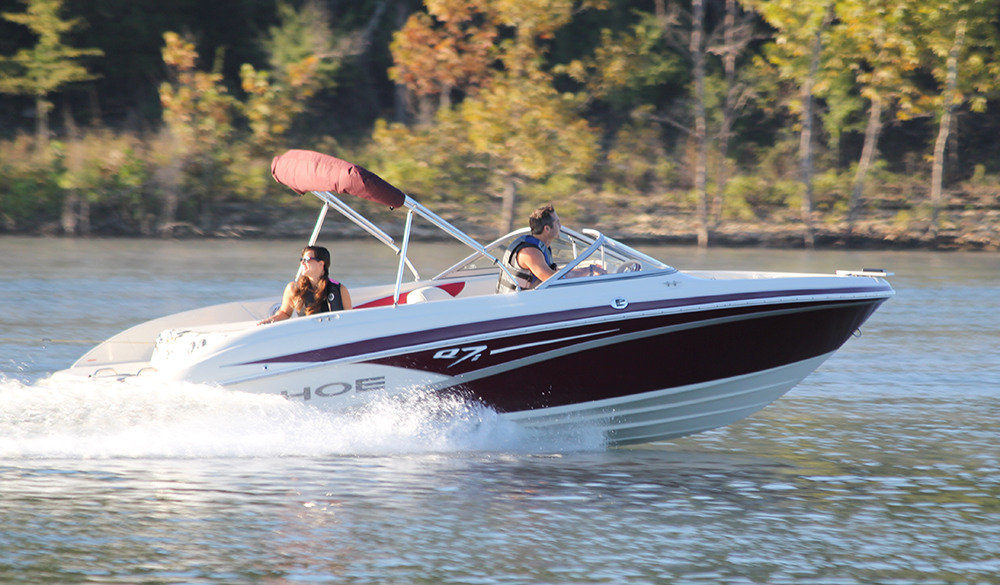Are you one of those adventurous souls who love to feel the wind in your hair and the spray of the sea on your face? Do you have a passion for exploring untapped horizons and navigating through vast open waters? If so, then let me ask you this: do you drive a boat? In the world of waterborne adventures, there is nothing quite like the thrill of taking control of a vessel and charting your own course. Whether you dream of leisurely cruises along serene rivers or high-speed dashes across the open ocean, mastering the art of boat driving can unlock a world of limitless possibilities. So, if you’re ready to embark on an exhilarating journey into the world of boating, read on to discover the essential skills, knowledge, and experiences that await you.
Driving a boat is not just a means of transportation; it is an art form that requires a unique set of skills and a deep understanding of the water’s whims. From maneuvering through tight marinas to navigating treacherous waters, there is no shortage of challenges that await those who choose to commandeer their own vessel. However, the rewards are equally abundant, as every journey becomes an opportunity for discovery, relaxation, and pure escapism. Whether you are a seasoned sailor or a complete novice, this guide will equip you with the knowledge and confidence to take the helm and embark on unforgettable adventures. So, buckle up, tighten those life jackets, and prepare to set sail on an extraordinary voyage into the captivating world of boat driving.
No, as a virtual assistant, I don’t physically drive a boat. However, I can provide information and assistance on topics related to boating, such as boat types, safety regulations, and navigation tips. If you have any specific questions or need guidance, feel free to ask!

Do You Drive a Boat? A Step-by-Step Guide
Driving a boat can be an exhilarating experience, but it also requires a certain level of knowledge and skill. Whether you’re a seasoned boater or a first-timer, this guide will provide you with step-by-step instructions on how to drive a boat safely and confidently. From understanding the basics of boat operation to navigating different water conditions, we’ve got you covered. So, let’s dive in!
Step 1: Familiarize Yourself with the Controls
Before you set sail, it’s crucial to familiarize yourself with the controls of the boat. Every boat may have slightly different controls, so take the time to read the owner’s manual and understand how each control functions. The main controls you need to be familiar with include:
- Throttle: Controls the speed of the boat. Pushing it forward increases speed, while pulling it back decreases speed.
- Steering Wheel: Determines the direction of the boat. Turn it left to go left and right to go right.
- Trim: Adjusts the angle of the motor to optimize performance and fuel efficiency.
- Ignition Switch: Starts and stops the engine. Turn it clockwise to start and counterclockwise to stop.
Once you feel comfortable with the controls, it’s time to move on to the next step.
Step 2: Master the Basics of Boat Operation
Before you hit the open water, it’s essential to understand the basics of boat operation. Here are a few key points to keep in mind:
- Starting the Engine: Make sure the boat is in neutral, turn the ignition switch clockwise, and listen for the engine to start.
- Steering: Use smooth and gradual movements of the steering wheel to control the direction of the boat. Avoid sudden jerks or sharp turns.
- Accelerating: Gradually increase the throttle to accelerate the boat. Be mindful of the speed limits and adjust accordingly.
- Braking and Reversing: To slow down or stop, pull back the throttle gently. To reverse, shift the gear into reverse and adjust the throttle as needed.
- Monitoring: Keep an eye on the fuel gauge, engine temperature, and other vital indicators on the boat’s dashboard. Regularly check for any signs of malfunction.
By mastering these basics, you’ll be well on your way to becoming a confident boat driver.
Step 3: Navigating Different Water Conditions
As a boat driver, you’ll encounter various water conditions, each requiring a different approach. Here’s how to navigate some common scenarios:
- Calm Waters: In calm waters, maintain a steady speed and keep an eye out for any obstacles or other boats.
- Waves and Swells: When encountering waves or swells, adjust your speed to maintain stability and avoid any sudden jolts.
- Strong Currents: When navigating through strong currents, use your boat’s trim and throttle to maintain control and counteract the current.
- Restricted Areas: Always adhere to the designated navigation channels and be aware of any restricted areas or no-wake zones.
Remember, safety should always be your top priority when driving a boat. Keep a lookout for other boats, follow the rules of the waterway, and use common sense.
Step 4: Responding to Emergencies
Lastly, it’s crucial to know how to respond in case of emergencies. Familiarize yourself with basic boating safety procedures, such as how to operate a fire extinguisher, how to use distress signals, and how to perform CPR. Additionally, always have a well-stocked first aid kit on board and know how to use its contents.
By following these steps and continuously honing your skills, you’ll become a proficient boat driver capable of handling any situation that may arise on the water. So, grab your life jacket, buckle up, and enjoy the thrill of driving a boat!
Frequently Asked Questions
Here are some commonly asked questions about driving a boat:
Question 1: Do you need a license to drive a boat?
Answer: In many countries, you are required to have a boating license to operate a boat. The specific requirements vary depending on the country and the size of the boat. It is always advisable to check with the local maritime authority to determine the licensing requirements in your area. Obtaining a license typically involves completing a boating safety course and passing an exam.
In some cases, smaller boats may be exempt from licensing requirements, but it is still important to familiarize yourself with the rules and regulations that apply to boating in your region to ensure safe and responsible operation.
Question 2: What are the basic safety precautions to follow while driving a boat?
Answer: When driving a boat, it is essential to prioritize safety. Some basic safety precautions to follow include:
– Always wear a properly fitted life jacket or personal flotation device (PFD) while on the boat.
– Familiarize yourself with the boat’s safety equipment, such as fire extinguishers, flares, and navigation lights.
– Be aware of and follow all navigational rules and regulations, including speed limits and no-wake zones.
– Maintain a safe distance from other boats, swimmers, and obstacles in the water.
– Keep a lookout for potential hazards, such as changing weather conditions or submerged objects.
By adhering to these safety precautions, you can help ensure a safe and enjoyable boating experience for yourself and others.
Question 3: Can I drive a boat without any prior experience?
Answer: While it is possible to operate a boat without prior experience, it is strongly recommended to have some basic knowledge and training before taking the helm. Understanding the fundamentals of boating, such as navigation, safety procedures, and handling the boat in different conditions, can greatly enhance your ability to operate the vessel safely and confidently.
Consider enrolling in a boating safety course, which will provide you with valuable information and practical skills. Additionally, spending time with experienced boaters and seeking their guidance can help you gain confidence and improve your boating skills.
Question 4: Are there any age restrictions for driving a boat?
Answer: Age restrictions for driving a boat vary depending on the country and the type of boat. In many jurisdictions, there are specific age requirements for operating a boat without adult supervision. These restrictions aim to ensure that individuals have the necessary physical strength, cognitive abilities, and maturity to handle the responsibilities of operating a boat safely.
It is important to familiarize yourself with the age requirements and any other restrictions that apply in your area. Always comply with the legal regulations to avoid any potential penalties and to prioritize safety on the water.
Question 5: Are there any specific regulations for driving a boat at night?
Answer: Yes, there are specific regulations for boating at night to ensure safety on the water. Some common regulations include:
– All boats must display the required navigation lights, which vary depending on the size and type of boat.
– Maintain a slower speed and exercise extra caution when boating in low visibility conditions.
– Be aware of your surroundings and keep an eye out for other boats, navigational markers, and potential hazards.
– Avoid shining bright lights directly into the eyes of other boaters, as it can impair their vision.
It is crucial to familiarize yourself with the specific nighttime boating regulations in your area and adhere to them to ensure the safety of both yourself and other boaters.
In conclusion, the question of whether you drive a boat is not simply a matter of operating a vessel on the water. It goes beyond the technical aspects and delves into a realm of adventure, freedom, and exploration. Indeed, driving a boat is an experience that allows individuals to navigate vast waters, discover hidden coves, and connect with nature in a unique way.
But driving a boat is more than just a recreational activity; it requires responsibility and knowledge of safety regulations. As you embark on the journey of piloting a boat, it is crucial to familiarize yourself with the rules of the waterways, understand navigation techniques, and develop the necessary skills to ensure both your safety and the safety of others sharing the waters with you.
So, whether you have already embarked on the thrilling journey of boating or are considering it as a new endeavor, remember that driving a boat is not just about steering a vessel—it is about embracing a lifestyle that allows you to explore new horizons, create lasting memories, and appreciate the beauty of our aquatic world. So, set sail, chart your course, and let the winds of adventure guide you as you navigate the open waters.

















